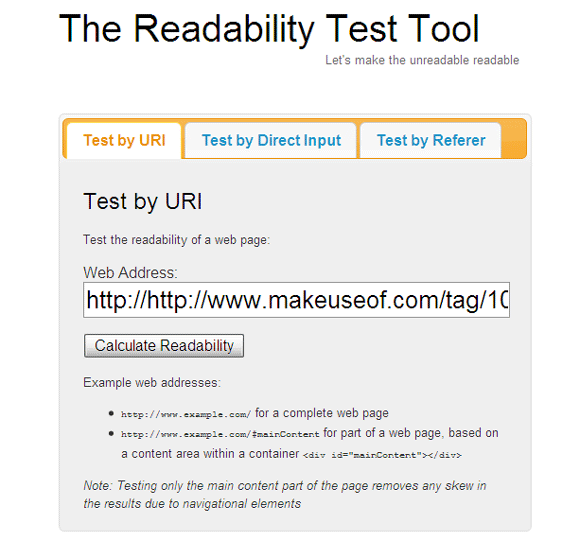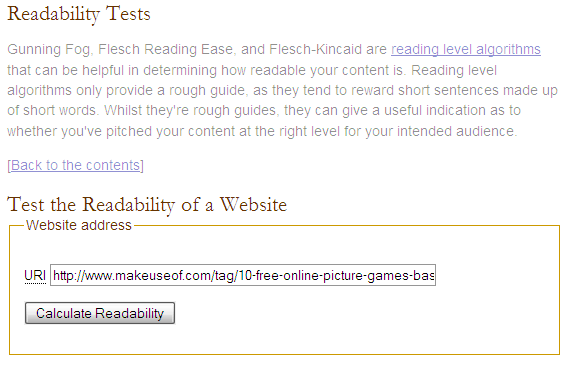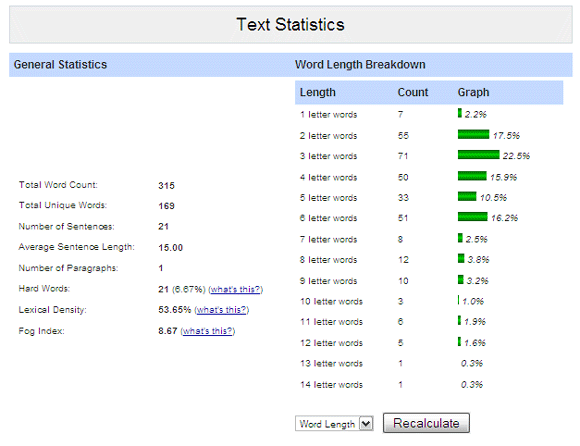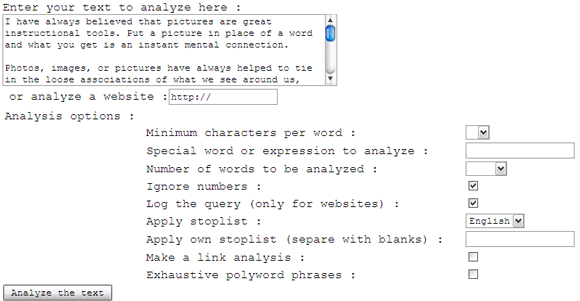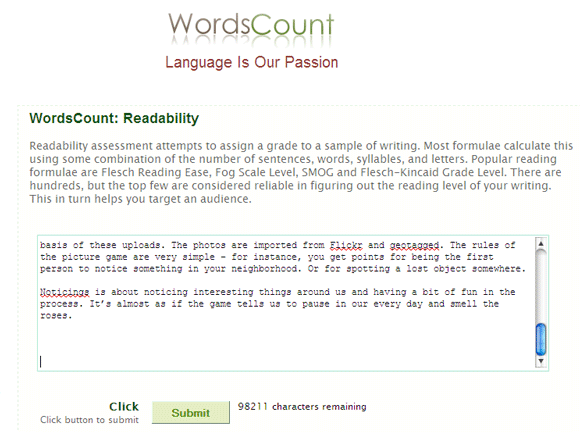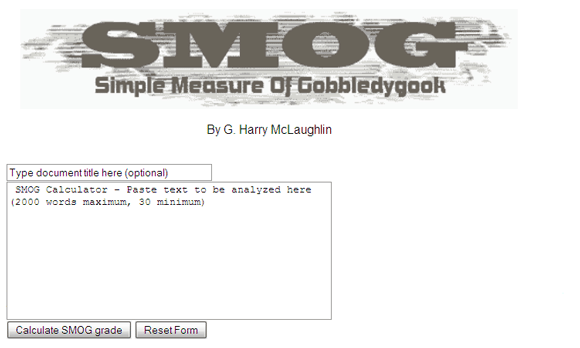Readability is the quality of writing that makes it easy (or difficult) to read and understand. Ever since the web started stringing together HTML pages, readability acquired a different sort of importance.
You can click on a URL and reach a webpage that's designed for a 10 year old. You can click on another link which takes you straight to Stephen Hawking's last paper.
Information is useful only if we can make sense out of it. This is where readability web tools for web pages comes in.
As Wikipedia says, readability of a particular text is measured using certain formulas. These are matched against the reading level of the audience. These are not absolute but a general blinker for the reading friendliness of a written text. Make the Wikipedia article your first chapter on the science of readability, if you are new to the concept.
A tool that's close by for readability analysis is in MS Word itself. MS Word uses two measuring scales like the Flesch Reading Ease and the Flesch-Kincaid Grade Level. That's handy but it makes checking of webpages a bit difficult. Here's where a few readability web tools can help out. Also, most of these tools give a few more readability scores to tally your work against.
The Wikipedia article on readability has another little tidbit of information - nearly all of today's blockbuster writers write at the 7th-grade level, including John Grisham, Stephen King, J. K. Rowling, and Dan Brown.
Where does your writing measure up against this piece of fact? Take your writing and put it through these eight online tools to get a few readability scores.
The Readability Test Tool
Give the Readability Test Tool your webpage address and it analyzes the text using the common readability indicators like Flesch Kincaid Reading Ease, Flesch Kincaid Grade Level, Gunning Fog Score, Coleman Liau Index, and Automated Readability Index (ARI).
There are three flexible options to carry out the tests - using an URL, by directly pasting the text, or by adding a referral link to the source page. There's a fourth option in the form of a browser bookmarklet.
For a first timer, the tests are easy to understand because an explanation of the scores is also given.
Juicy Studio's Readability Test
Test the readability of a website by adding the page link to the field box given on the site. The service gives an explanation of what the Flesch Kincaid Reading Ease, Flesch Kincaid Grade Level, and the Gunning Fog Score scores are supposed to mean.
As it is a test based on an URL rather than direct copy, the results can go slightly awry if the webpage is graphic heavy. It is a bit cumbersome to interpret the scores because unlike the last test tool it doesn't match the readability ease with a particular age group. But as the explanations for the scores are given right below, we can make an assessment.
Online-utility.org
Online-utility.org is a collection of free tools, one of which happens to be a readability calculator. The tool covers four measures - Coleman Liau index, Flesh Kincaid Grade Level, ARI (Automated Readability Index) and SMOG.
Copy-paste the text and get the scores. The results also display a list of sentences which can be structured better to improve overall readability.
Readability.info
Readability.info can analyze text from an URL and a MS Word Document. You have measures like Coleman Liau index, Flesh Kincaid Grade Level, ARI (Automated Readability Index), SMOG, Fog Index and Lix formula. Word usage counts are also given which can help identify excessive use of particular parts of speech.
Also follow the link given right at the bottom which brings up readability scores for some well known websites.
Text Content Analysis Tool
This readability web tool gives out stats relating to word count, unique words, number of sentences, average words per sentence, lexical density, and the Gunning Fog readability index.
With a free registration you can access the Advanced Text Analyzer tool. With the free registration, you can submit texts longer than 10000 words and can also use a Graded Text Analysis Tool plus a sortable word frequency list.
Even in the standard service, a word frequency cloud is quite handy to display your most used words by relative size.
Lexicool Textalyser
Paste your content in the simple form field and click on Go to get the readability statistics. You can also enter an URL for webpage analysis.
The tool analyses word groups in more detail especially with regards to density of certain words. You can set it to examine the text for specific words or expressions. This makes it useful as a basic keyword measurement tool. The site lacks explanation aids, but it says that it's coming up.
WordsCount
You get a simple text field and a submit button. WordsCount also has three more measuring indices which we haven't seen in the above services - Spache Index, Dale-Chall Index and Dale-Chall Grade.
The site also has a syllable counter which uses a dictionary at the backend to look up the lengths and thus claims to be more accurate.
SMOG Readability Calculator [Broken URL Removed]
This calculator is based on a single measurement index called Simple Measure of Gobbledygook. Yes, this actually is the name and it measures the years of education needed to completely understand a piece of writing. The calculator is provided by the developed the test - G. Harry McLaughlin.
The web form has a word limit of 2000 words and it is simple without a URL checker. It seems just an interface as the Calculate button redirects the analysis to the WordsCount website.
These free web services can not only help us improve our web writing but also improve the search engine ranking score because readability has a direct relation to the SEO of a website too. Readers will stay on an article or site if they can effortlessly understand it.
Do you make the effort to nitpick at your writing? Are they worth an analysis or would you go by your gut feel?
Image credit: Luis De Bethencourt


